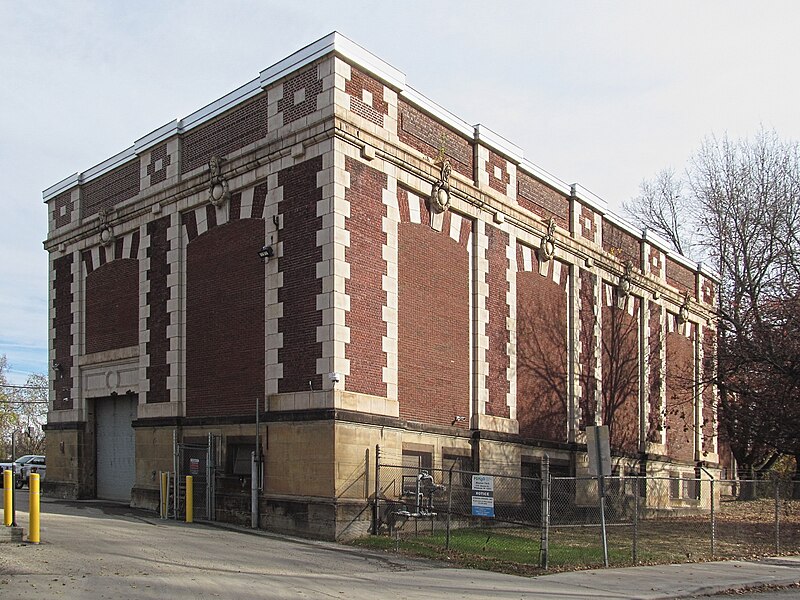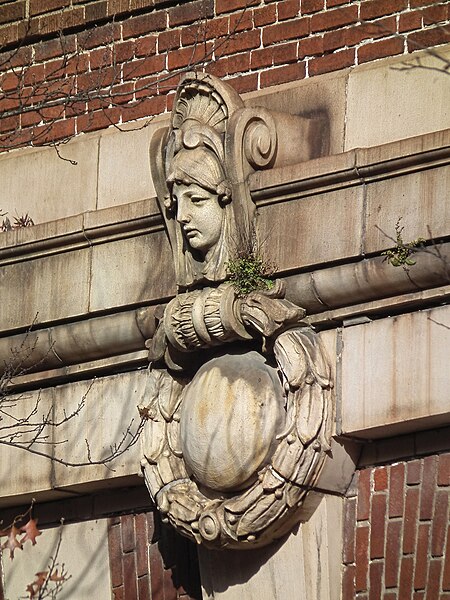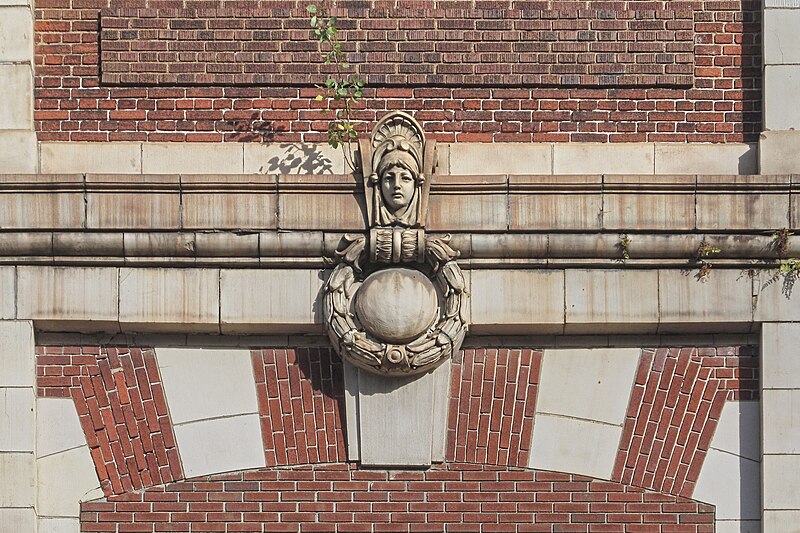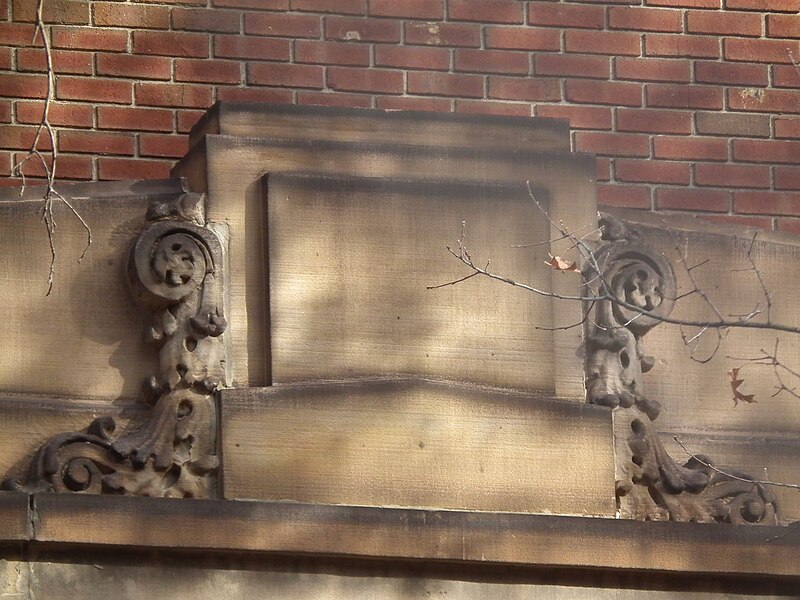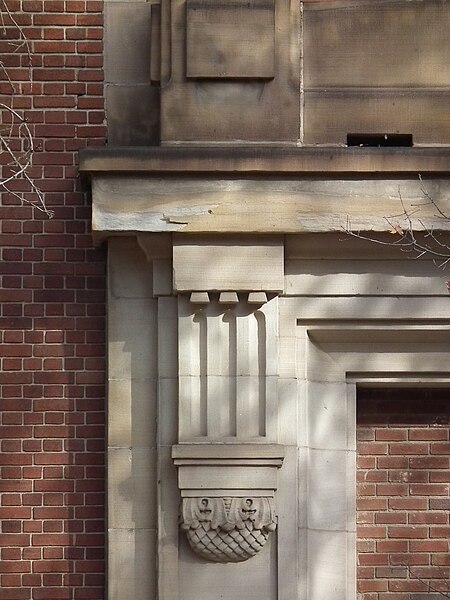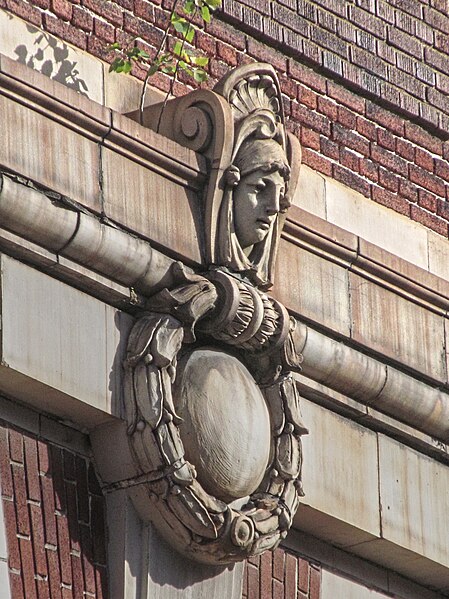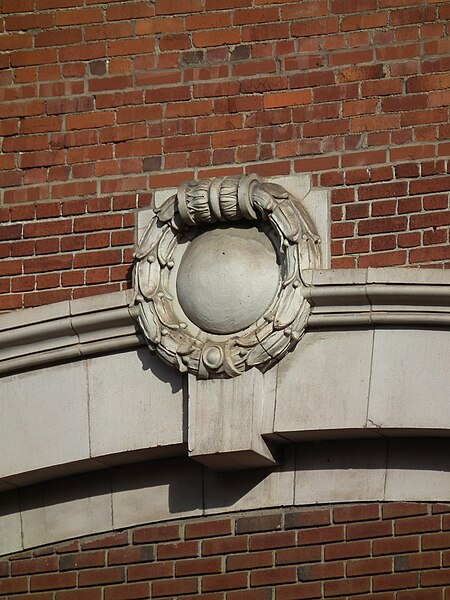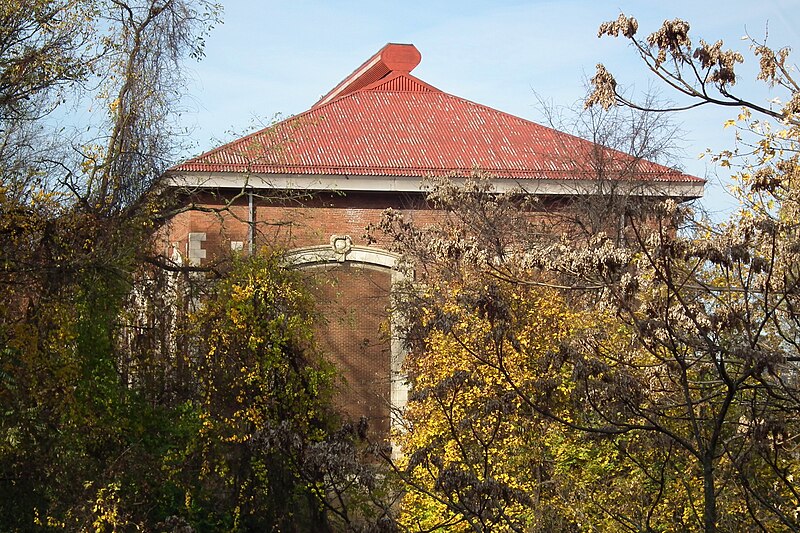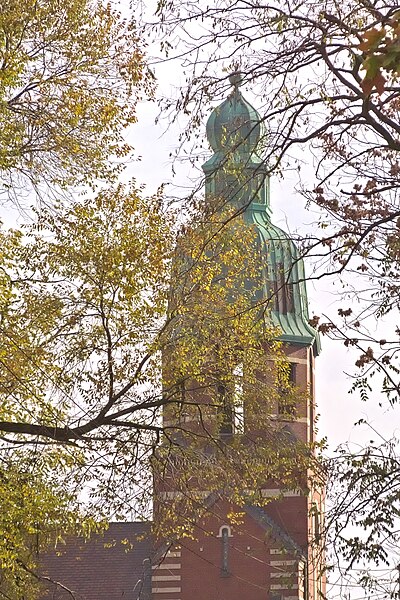

St. Josaphat’s is one of the most unusual of John T. Comès’ works. It has some of his trademarks, notably the stripes—he loved stripes. But it also takes more inspiration from Art Nouveau than most of his churches, which are usually more firmly rooted in historical models. It is now having some renovation work done to fit it for its post-church life.




